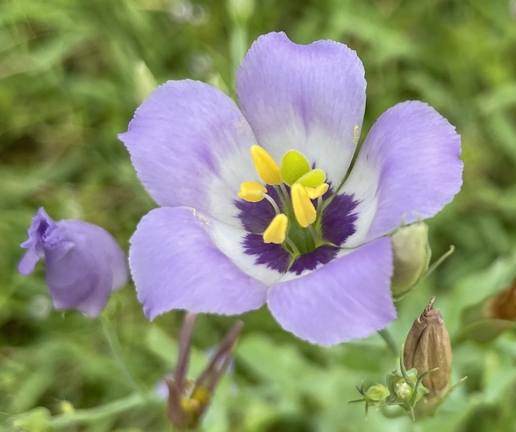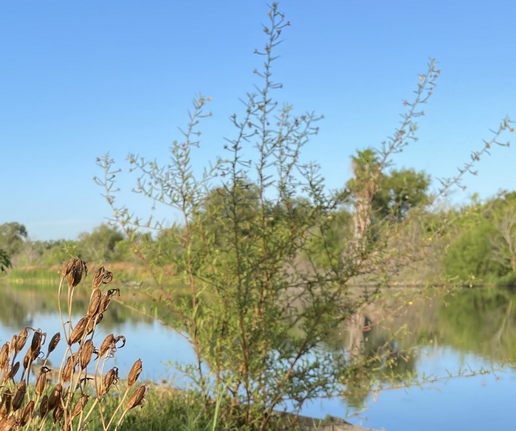I had some fun this summer with two new pretty plants at the resaca bank. The plants sort of just appeared one week, about five feet apart, one yellow and one lavender.

The yellow one goes by the name, Mexican primrose-willow (Ludwigia octovalvis). It is listed in Richardson, A., King, K., p. 338. 2011. Plants of Deep South Texas. Texas A&M University Press, where the authors describe it as a species found in wet places such as resaca and canal banks. It is a host plant for some Sphinx moths and popular with insects for nectar and pollen.
Mexican primrose-willow has a bright yellow radial four-petal flower about one inch in diameter; it blooms summer through fall. The shrubby plant can get nearly four feet tall and spread out about as wide in an erect but airy growth with numerous flowers. The leaf blades are about five inches long and botanically described as lanceolate.
A perennial plant, Mexican primrose-willow is found in Cameron and Hidalgo Counties. Its native habitat is swamp and wetlands mainly in the southern half of Texas. It also is found along the Gulf Coast states, up to Georgia and the Carolinas as well as in Hawaii, Puerto Rico and the Virgin Islands – it is suggested that its remarkable wide dispersal has probably been with human assistance. This fast-growing plant will grow in full sun or partial shade; it will heavily reseed. The shrub can be trimmed to keep it from growing too large.
The second surprise plant has beautiful lavender flowers and was identified in iNaturalist.org as catchfly prairie gentian (Eustoma exaltatum) and in Richardson/King, PDST, p. 277, as bluebell gentian.

The Latin, Eustoma, means open mouth and refers to the large throat of the flowers which are purple in the bowl and lavender at the upper petals. The bell-shaped flowers are nearly three inches across and have five to seven one-inch petals. The plant has a single erect stem one to two feet tall with multiple branches of blooms. The leaves are ovate; stems and leaves are a pastel gray/green color.
This plant likes sun or part shade and damp sandy coastal habitat to saline or freshwater marshes. It is found in Cameron, Hidalgo and Willacy Counties and has a native distribution through the southern United States from Florida west to California and north into the interior to Montana and South Dakota in moist prairies and fields.

An annual plant, it blooms spring and summer, but all too soon will dry to a rich cinnamon color and should be left to disperse its seeds. The word catchfly generally refers to white, pink, red or purplish flowers that have sticky stems and calyces (the sepals that form a protective layer around a flower in bud) on which – you guessed it – small insects may become stuck.